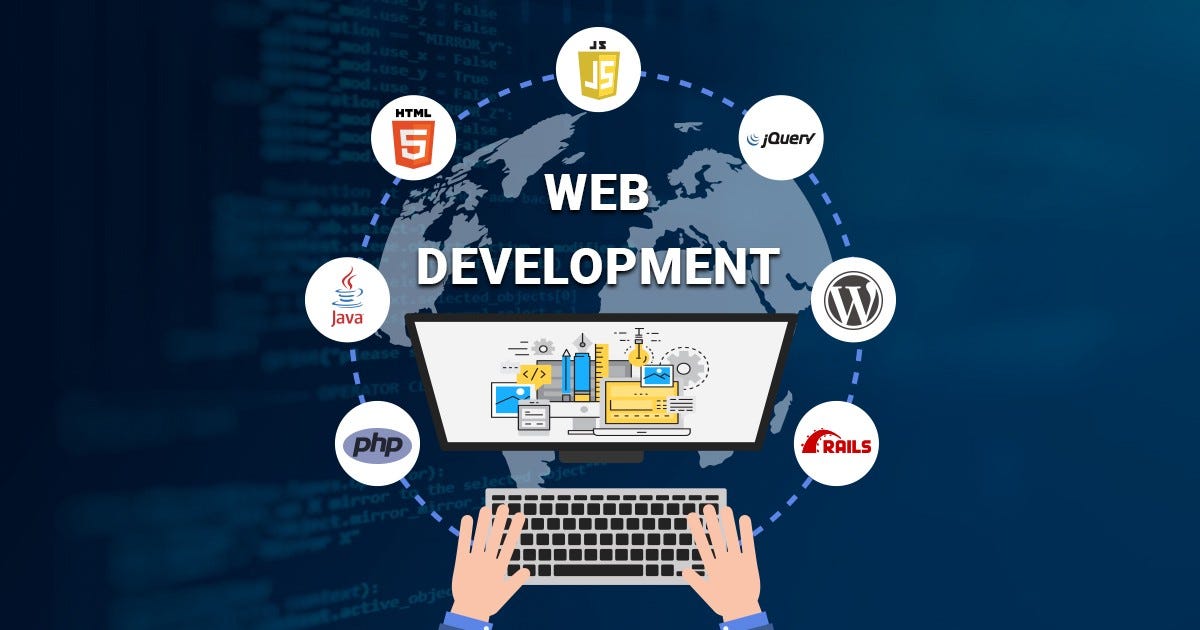Kickstarting Web Development: A Beginner's Guide
 Arbab Hassan
Arbab HassanTable of contents
- Understand the Basics
- Learn Version Control
- Choose a Text Editor
- Responsive Web Design
- Basic Command Line Usage
- Understand Web Browsers
- Learn a CSS Framework
- Introduction to Front-End Libraries
- Backend Development
- Database Knowledge
- APIs (Application Programming Interfaces)
- Build Projects
- Portfolio and Resume
- Networking
- Job Search

Getting started in web development can be an exciting journey. Here's a step-by-step guide to help you begin your web development journey.
Understand the Basics
HTML/CSS: Learn the fundamentals of HTML for structuring web content and CSS for styling.
JavaScript: Get familiar with JavaScript for adding interactivity to your web pages.
Learn Version Control
Use Git to track changes in your code and collaborate with others. Platforms like GitHub and GitLab are popular for hosting your projects.
Choose a Text Editor
Select a code editor such as Visual Studio Code, Atom, or Sublime Text for writing and editing your code efficiently.
Responsive Web Design
Learn about responsive design principles to create websites that work on various devices and screen sizes.
Basic Command Line Usage
Familiarize yourself with basic command line operations. It's a crucial skill for efficient development.
Understand Web Browsers
Learn how browsers work and their developer tools. Chrome DevTools and Firefox Developer Tools are powerful for debugging.
Learn a CSS Framework
Explore popular CSS frameworks like Bootstrap or Tailwind CSS to streamline your styling process.
Introduction to Front-End Libraries
Learn a front-end library like React, Angular, or Vue.js to build dynamic and interactive user interfaces.
Backend Development
Choose a backend language like Node.js (JavaScript), Python, Ruby, or PHP. Learn how to handle server-side logic and databases.
Database Knowledge
Understand databases, particularly relational databases (e.g., MySQL, PostgreSQL) or NoSQL databases (e.g., MongoDB).
APIs (Application Programming Interfaces)
Learn how to work with APIs to fetch and send data between your front end and back end.
Build Projects
Apply your knowledge by working on real-world projects. This will help you solidify your skills and create a portfolio.
Portfolio and Resume
Build a portfolio showcasing your projects and skills. Create a resume highlighting your web development experience.
Networking
Join developer communities, attend meetups, and connect with other developers on platforms like LinkedIn or Twitter.
Job Search
Begin applying for internships or entry-level positions. Tailor your resume and portfolio to showcase your skills and projects.
Remember, web development is a vast field, and you don't need to master everything at once. Focus on one step at a time, and practice regularly to reinforce your learning. Enjoy the process and be persistent in your efforts!
Subscribe to my newsletter
Read articles from Arbab Hassan directly inside your inbox. Subscribe to the newsletter, and don't miss out.
Written by

Arbab Hassan
Arbab Hassan
Welcome to Arbab Hassan's Blog, your go-to resource for software development tutorials, tips, and insights. Join me on this coding journey as we navigate the ever-changing world of technology.